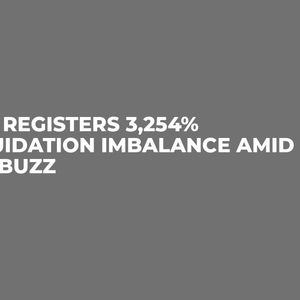BitcoinWorld Revealing the AI Bubble: Why Infrastructure Timelines Threaten Trillion-Dollar Bets Is the AI bubble about to burst, or are we witnessing the birth of a new technological era? The answer lies not in apocalyptic predictions but in understanding the fundamental mismatch between AI’s lightning-fast software development and the slow, deliberate pace of building the physical infrastructure that powers it. What Really Defines an AI Bubble? Contrary to popular belief, a tech bubble isn’t necessarily a catastrophic event. In economic terms, it’s simply a bet that grew too large, creating more supply than demand. The current AI bubble represents massive investments in infrastructure that may or may not align with future usage patterns. The Infrastructure Challenges Behind AI Growth The core problem facing AI expansion isn’t just technological innovation—it’s physical construction. Data centers take years to build, while AI software evolves in months. This creates several critical challenges: Power requirements outpacing electrical grid capabilities Construction timelines misaligned with technological advancement Geographic limitations for suitable data center locations Cooling systems struggling with next-generation chip demands Massive Investments Meet Demand Uncertainty The scale of current AI investments is staggering. Oracle has committed $300 billion in cloud services to OpenAI, while the “Stargate” project involves $500 billion in total AI infrastructure. Meta plans to spend $600 billion on infrastructure over three years. Yet McKinsey surveys show most companies remain in “wait and see” mode regarding AI adoption. Company Investment Timeline Oracle/OpenAI $300B Ongoing Stargate Project $500B Multi-year Meta $600B 3 years Oracle New Mexico $18B credit Construction The Real Demand Uncertainty Problem While infrastructure spending reaches unprecedented levels, genuine demand for AI services remains unclear. Most businesses use AI for specific cost-cutting applications rather than transformative business changes. The gap between infrastructure supply and actual usage creates significant bubble risks. Power and Space: The Hidden Bottlenecks Microsoft CEO Satya Nadella recently highlighted that data center space, not chips, represents the primary constraint. Existing facilities sit idle because they can’t handle modern chip power requirements. The electrical grid and construction industry move at traditional paces, creating expensive bottlenecks even if AI demand materializes as expected. Actionable Insights for Navigating the AI Landscape Understanding the AI bubble requires recognizing these key factors: Monitor infrastructure development timelines versus software advancement Evaluate actual business adoption rates beyond hype cycles Consider power and space constraints in investment decisions Watch for breakthroughs in energy efficiency and semiconductor design The AI revolution faces a fundamental tension: digital innovation moves at light speed while physical infrastructure crawls. The companies that navigate this mismatch successfully will define the next decade of technological progress. Frequently Asked Questions What companies are leading AI infrastructure investment? Major players include Oracle , working with OpenAI on the Stargate project, and Meta , which has committed $600 billion to infrastructure. Who has expressed concerns about AI infrastructure? Microsoft CEO Satya Nadella has highlighted data center space as a greater concern than chip supply. What research informs demand uncertainty? Recent McKinsey surveys show most companies remain cautious about large-scale AI adoption. To learn more about the latest AI market trends, explore our article on key developments shaping AI institutional adoption. This post Revealing the AI Bubble: Why Infrastructure Timelines Threaten Trillion-Dollar Bets first appeared on BitcoinWorld .
















